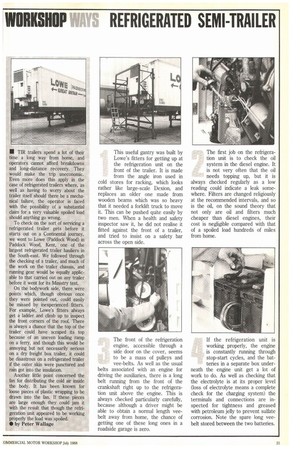WOO
Page 127

If you've noticed an error in this article please click here to report it so we can fix it.
SHOP • TIR trailers spend a lot of their time a long way from home, and operators cannot afford breakdowns and long-distance recovery. They would make the trip uneconomic. Even more does this apply in the case of refrigerated trailers where, as well as having to worry about the trailer itself should there be a mechanical failure, the operator is faced with the possibility of a substantial claim for a very valuable spoiled load should anything go wrong.
To check on the sort of servicing a refrigerated trailer gets before it starts out on a Continental journey, we went to Lowe (Paddock Wood) in Paddock Wood, Kent, one of the largest refrigerated trailer hauliers in the South-east. We followed through the checking of a trailer, and much of the work on the trailer chassis, and running gear would be equally applicable to that carried out on any trailer before it went for its Ministry test.
On the bodywork side, there were points which, though obvious once they were pointed out, could easily be missed by inexperienced fitters. For example, Lowe's fitters always get a ladder and climb up to inspect the front corners of the roof. There is always a chance that the top of the trailer could have scraped its top because of an uneven loading ramp on a ferry, and though this would be annoying but not necessarily serious on a dry freight box trailer, it could be disastrous on a refrigerated trailer if the outer skin were punctured and rain got into the insulation.
Another little point concerned the fan for distributing the cold air inside the body. It has been known for loose pieces of plastic wrapping to be drawn into the fan. If these pieces are large enough they could jam it with the result that though the refrigeration unit appeared to be working properly the load was spoiled.
















































































































































